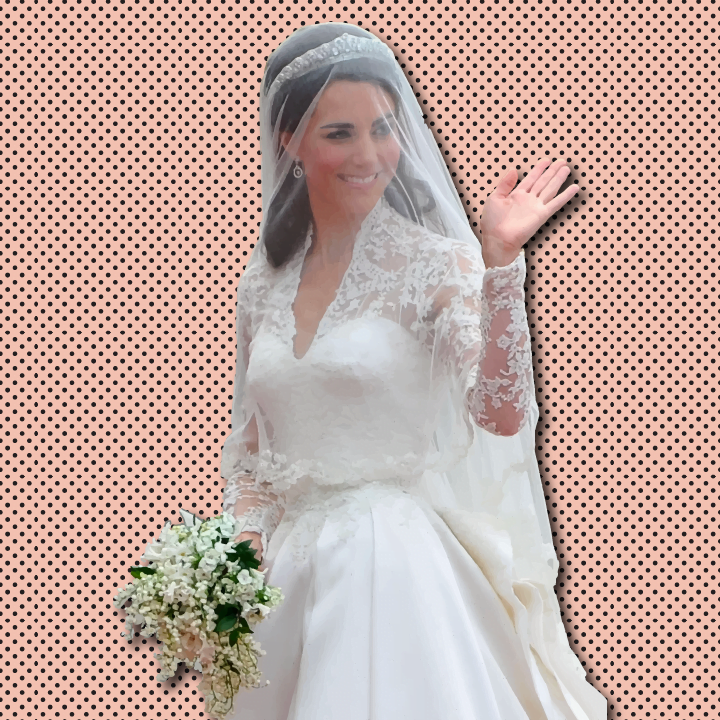Jezebel: The Forging of Kate Middleton Into a Future Queen
On the eve of her 10th wedding anniversary, Catherine, Duchess of Cambridge, appeared on the steps of St. George’s Chapel in Windsor for a very different sort of formal royal occasion: the funeral of the 99-year-old Prince Philip. She was appropriately somber in a black coat dress and matching hat, with a veil over her eyes lending her appearance a slight frisson of Dynasty-style mature glamour. The look was leavened only by a four-strand pearl choker borrowed from Queen Elizabeth II. After the service family members opted to walk back to Windsor Castle in the pleasant spring weather, and so came the most hotly anticipated moment of the day: Will and Harry together again, walking along at first with Kate—until she discreetly melted a couple of steps behind the brothers and let them walk ahead together.
The Duchess of Cambridge received effusive praise for her appearance at the funeral and perceived role as peacemaker between the warring brothers: “Kate Middleton’s new role as the glue holding troubled House of Windsor together,” the Mirror declared breathlessly in the wake of the funeral, praising the duchess for “tenderly” kissing her father-in-law on the cheek. The Telegraph announced, “The Duchess of Cambridge’s destiny is set, but it was at Prince Philip’s funeral that she showed just how ready she is for the role of future queen,” while the Sun pronounced: “Kate Middleton looked every inch the graceful and stoic royal at Prince Philip’s funeral.”
It was a media anointment in the UK—a coronation, even. Those same papers once tittered about how some people found Kate’s mother a bit vulgar and bandied about the nicknames “Waity Katy” or the “Duchess of Dolittle,” suggesting Kate was shamelessly content to wait around for Will and none too keen on work. Over the last decade, the commoner from Berkshire has successfully fashioned herself into a perfect, smiling, briskly competent but never flashy vision of modern, polished, up-market motherhood—posting her own photographs of the kids on Instagram, chatting kindly through her charity efforts with new mothers struggling to adjust. The Duchess of Cambridge is now the wholesome heart of the Windsors, the maternal figure with an expansive understanding of family ties ready to extend a hand to the prodigal brother, the future queen with the traditional womanly virtues required to bind together an ancient institution as its biggest generational transition in a century loom. This modern queen is the creation of a very old-fashioned playbook—handed down straight from Victoria and Albert.
Born in 1982 to Carole and Michael Middleton, who met working as a flight attendant and a dispatcher at British Airways, Kate’s childhood was prosperous but conventionally happy. Michael is distantly descended from Tudor gentry but more recently from Yorkshiremen who’d struck it rich in wool during the 19th century, resulting in a series of trusts that could be drawn upon for things like fancy private education. Carole is technically a very distant relative of the Queen Mother, but her family tree was full of laborers—including a coal-miner great-grandfather—and she had been born in a council flat. Around the time she had her third child, Carole launched Party Pieces, her party supply company; Robert Lacey puts somewhat dryly in his book Battle of Brothers that her “haggling skills are legendary in the direct mail business.” A source told him: “Butter wouldn’t melt in her mouth most of the time, but she was a ferocious negotiator—and if the haggling wasn’t going her way, the decibel level rose.”
To continue reading this Jezebel article, click here.






